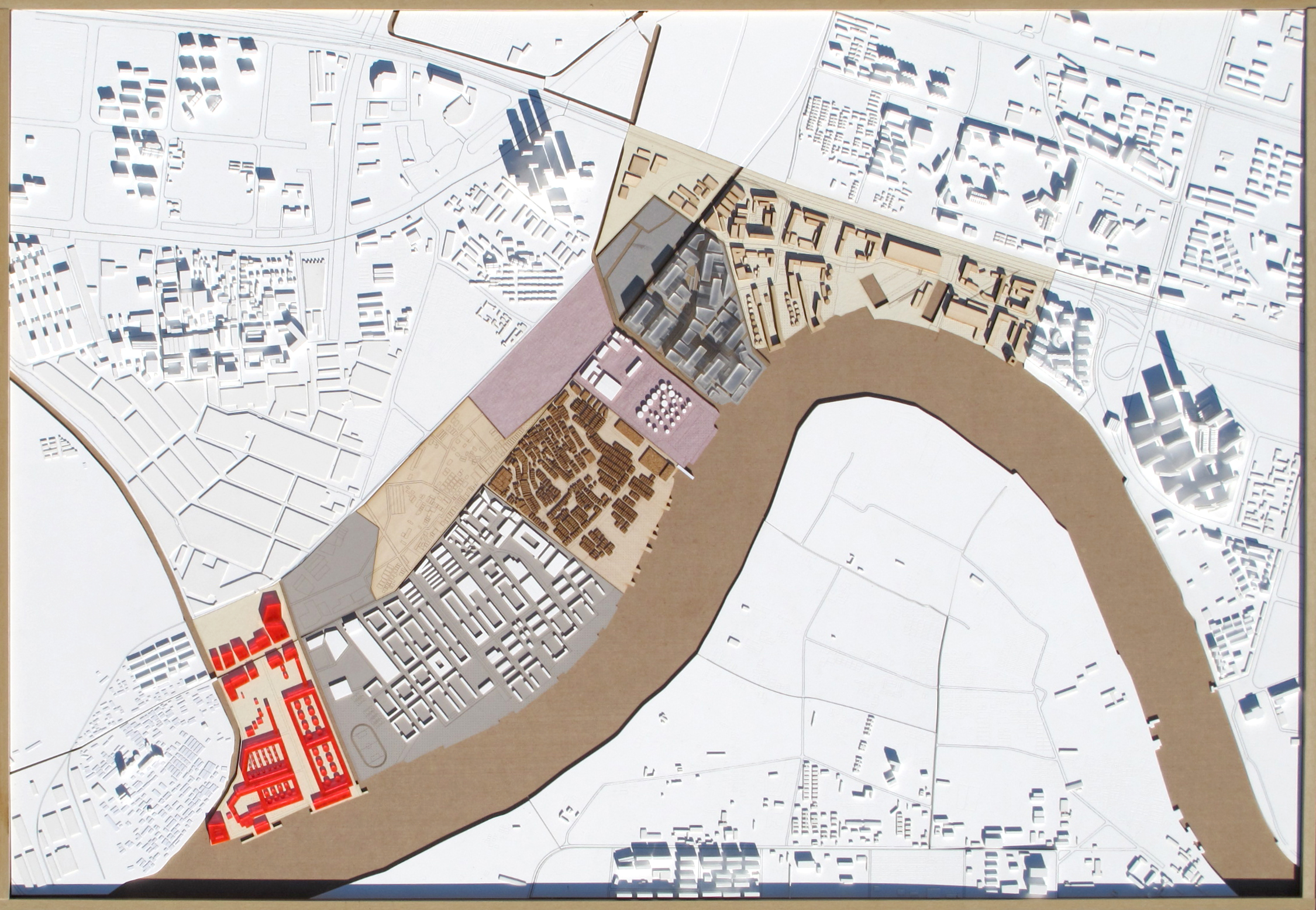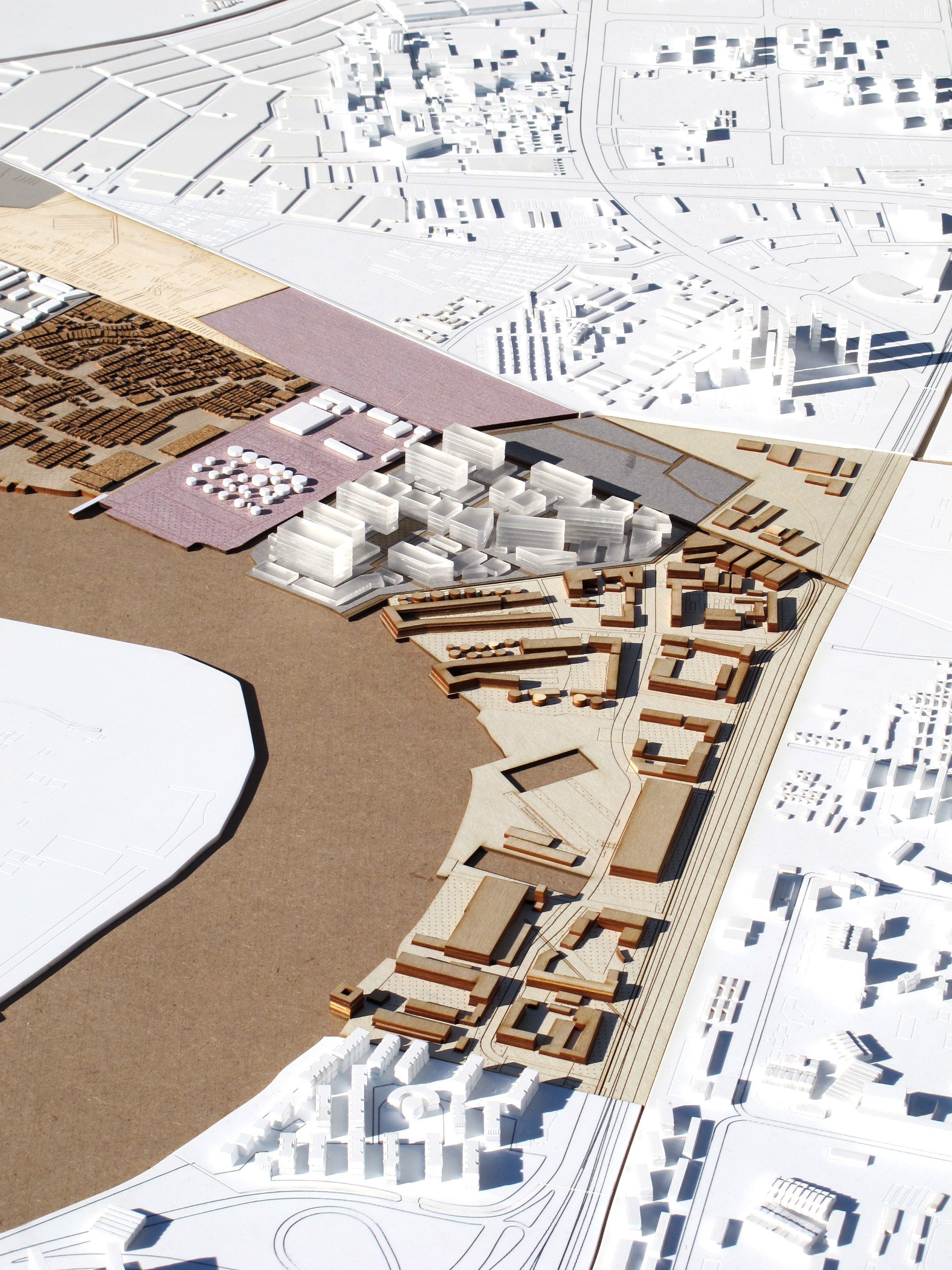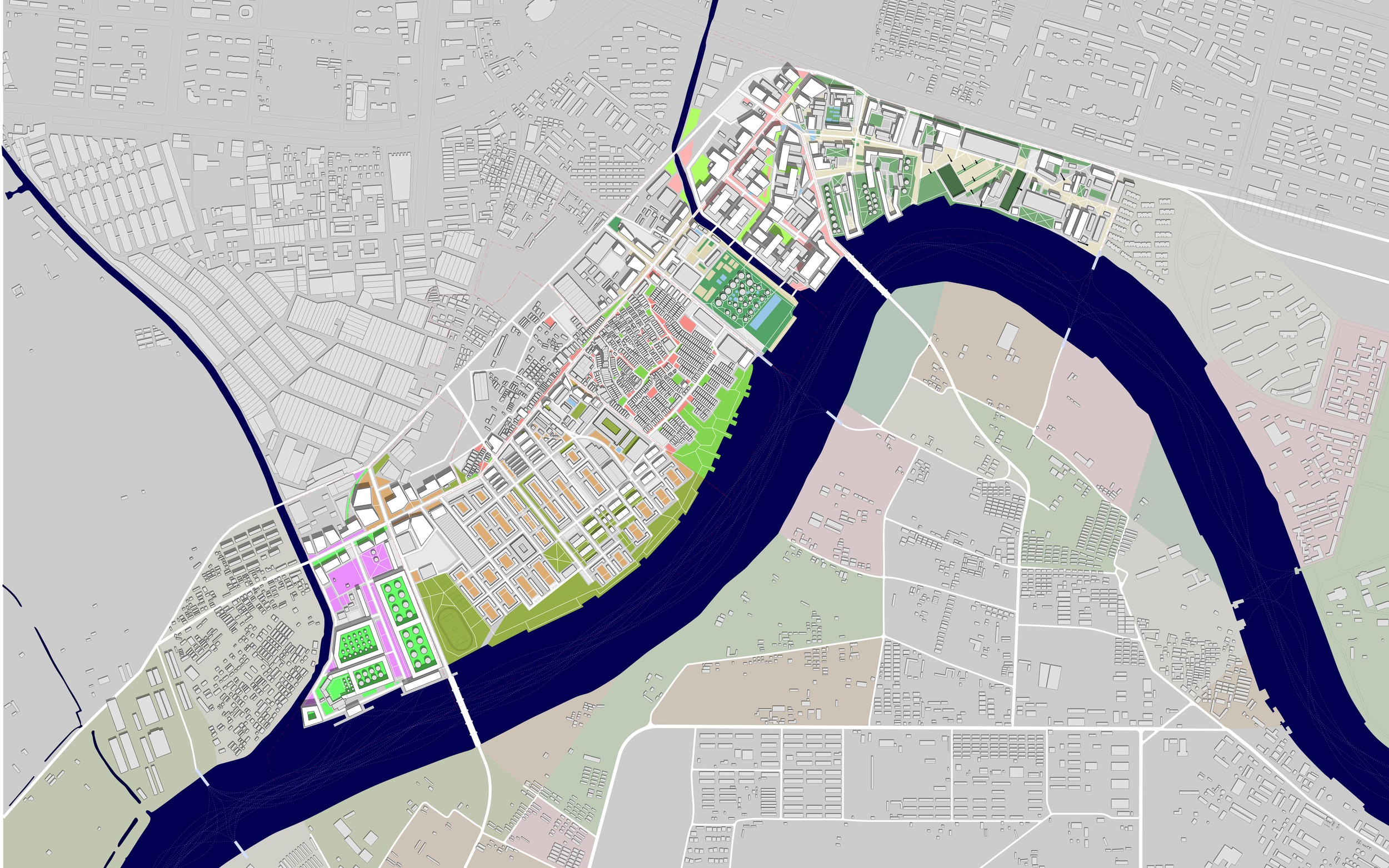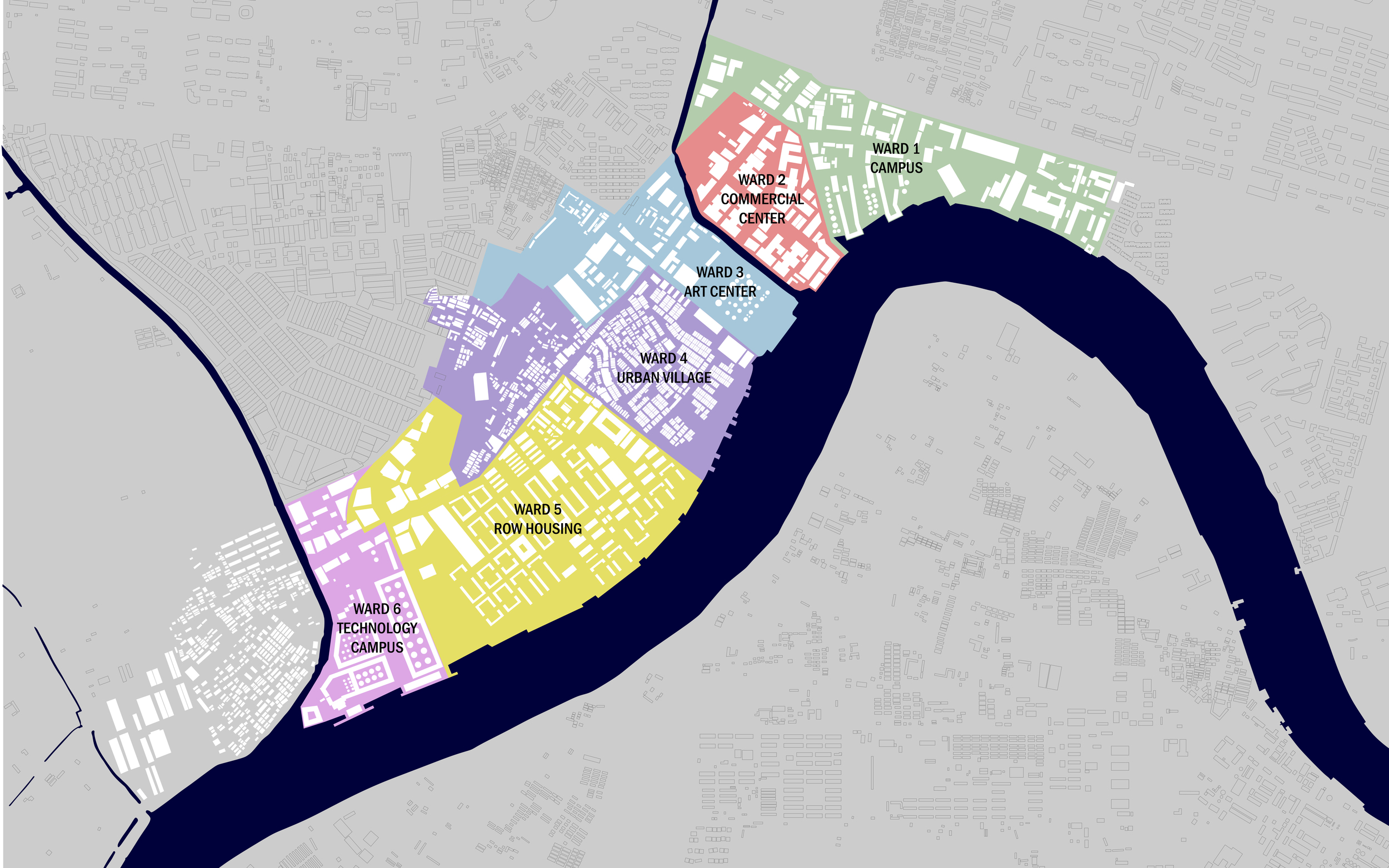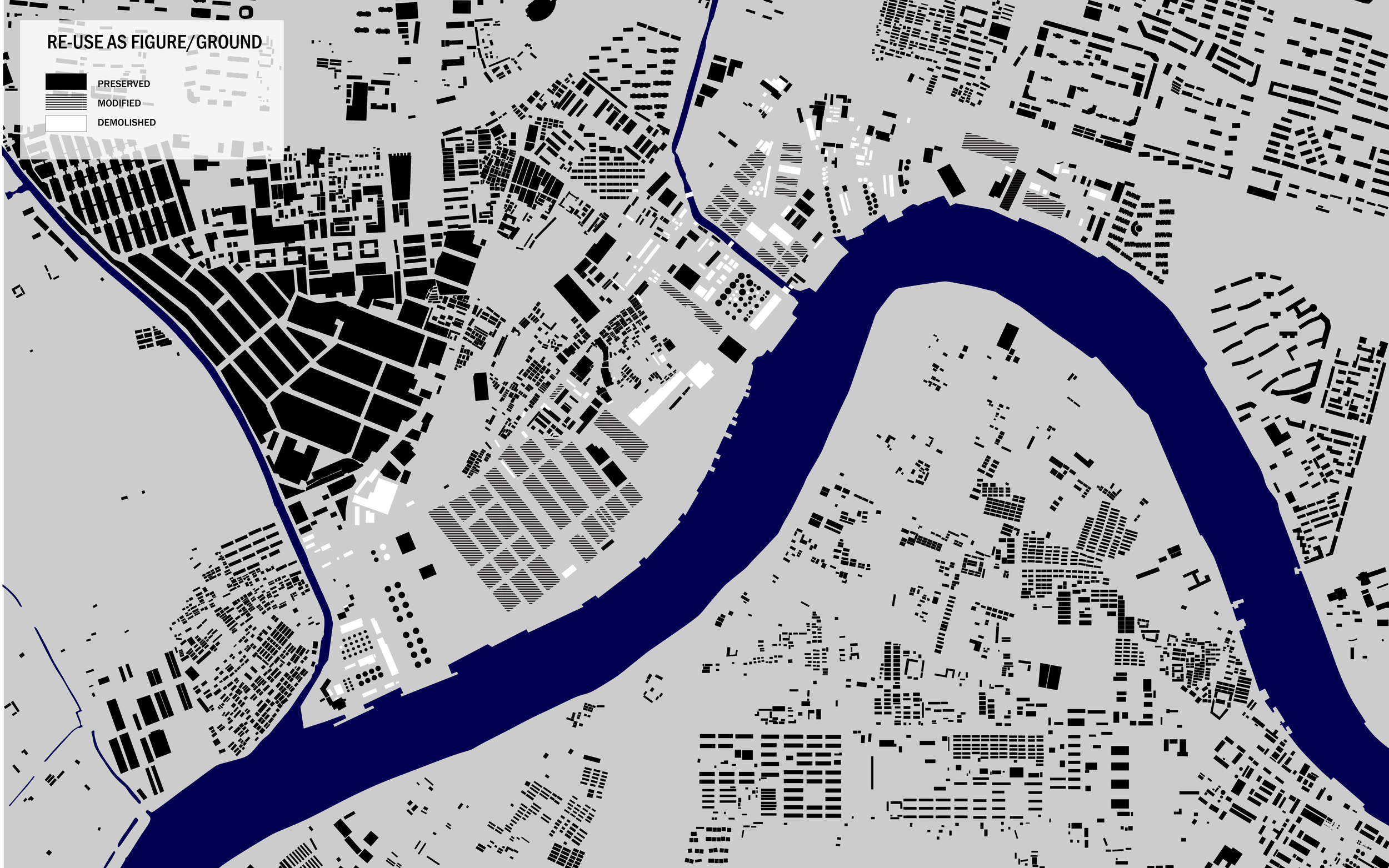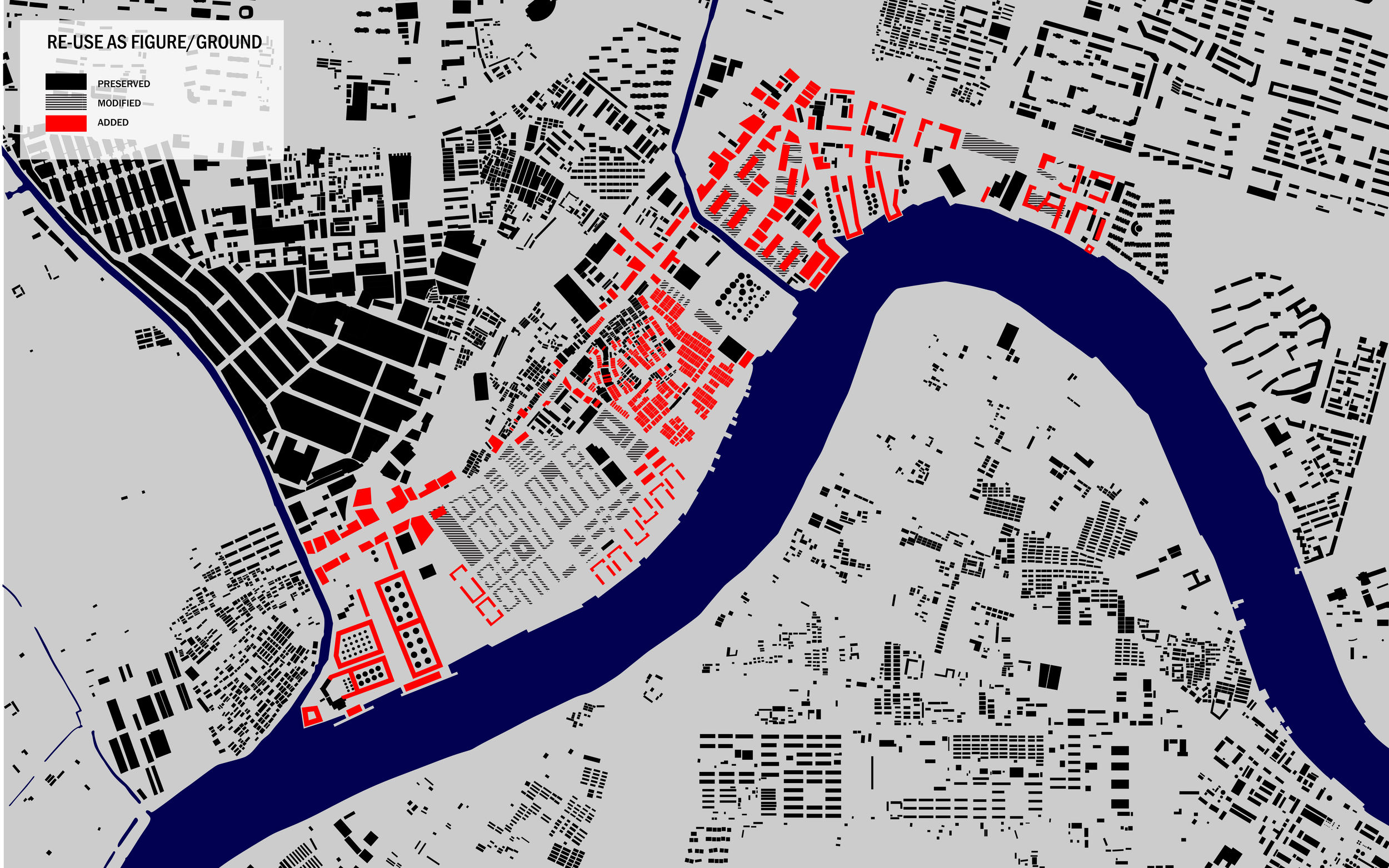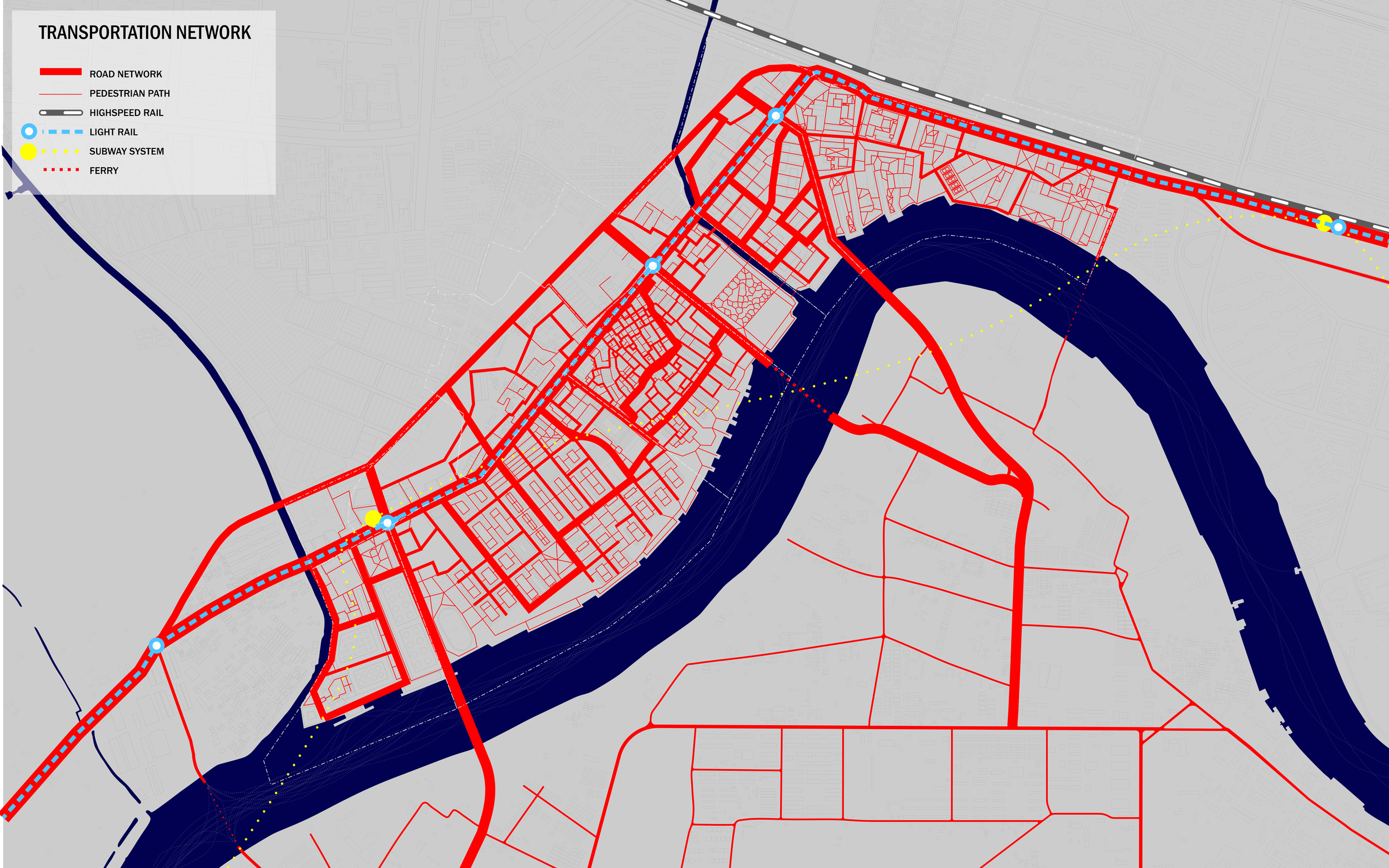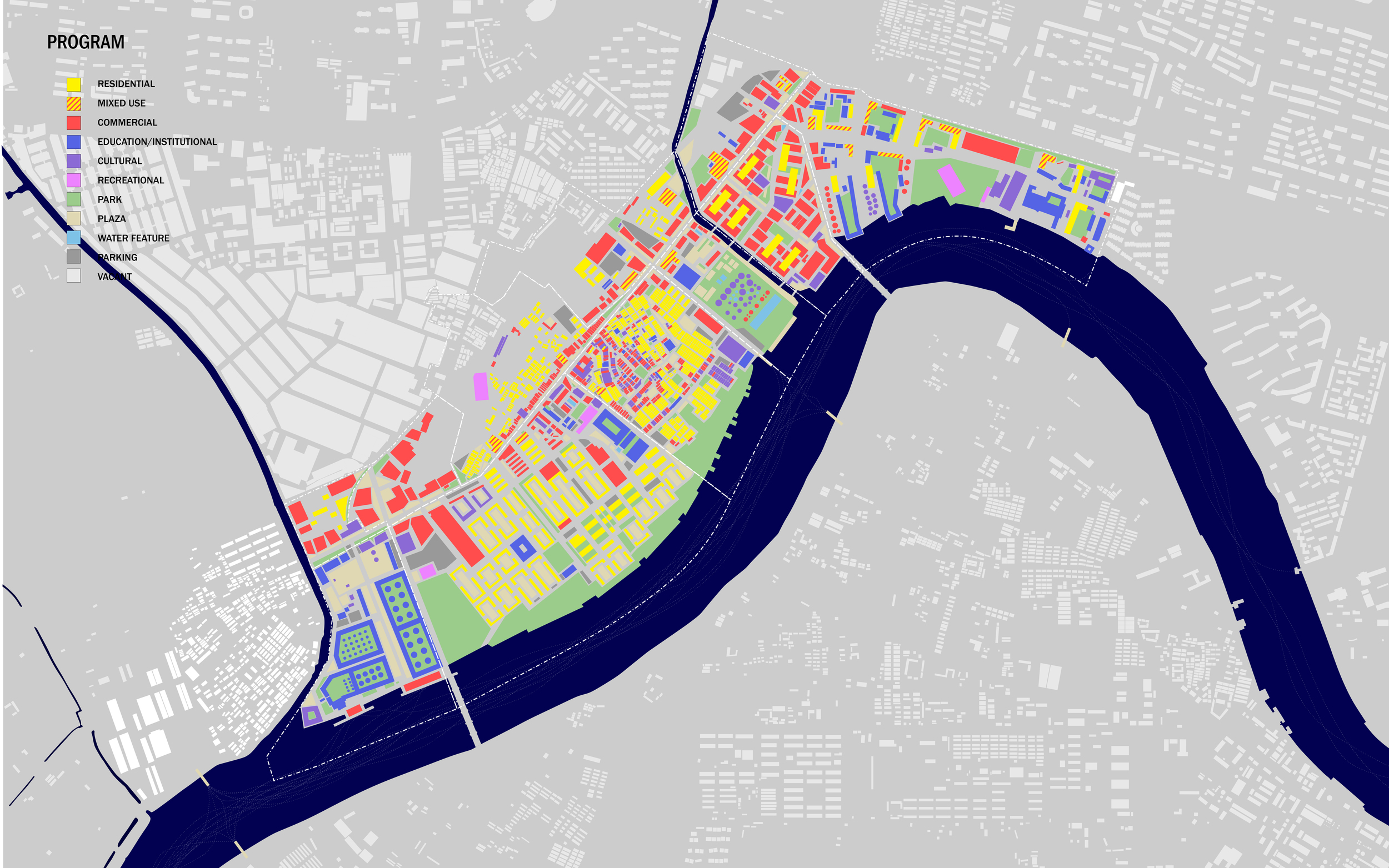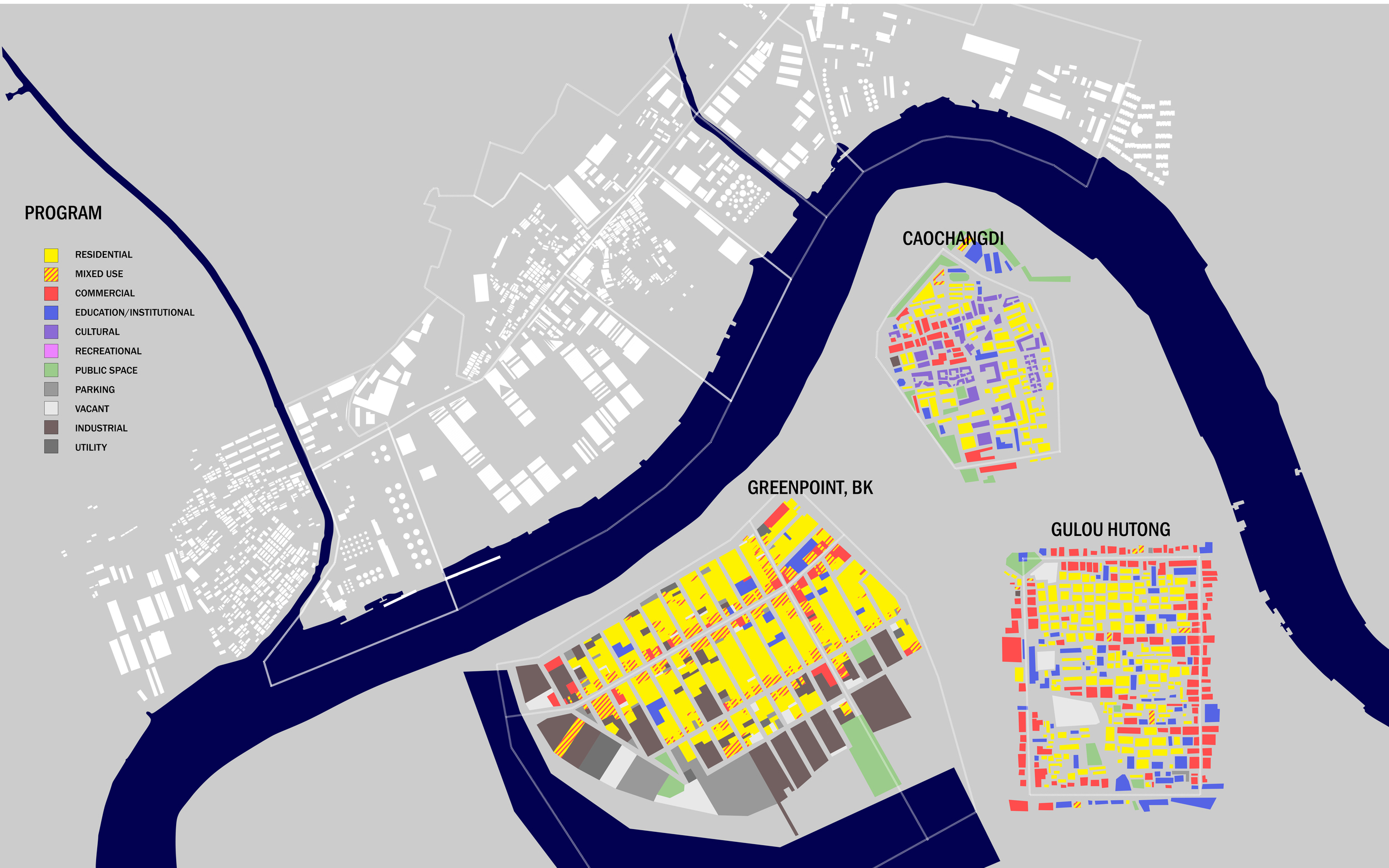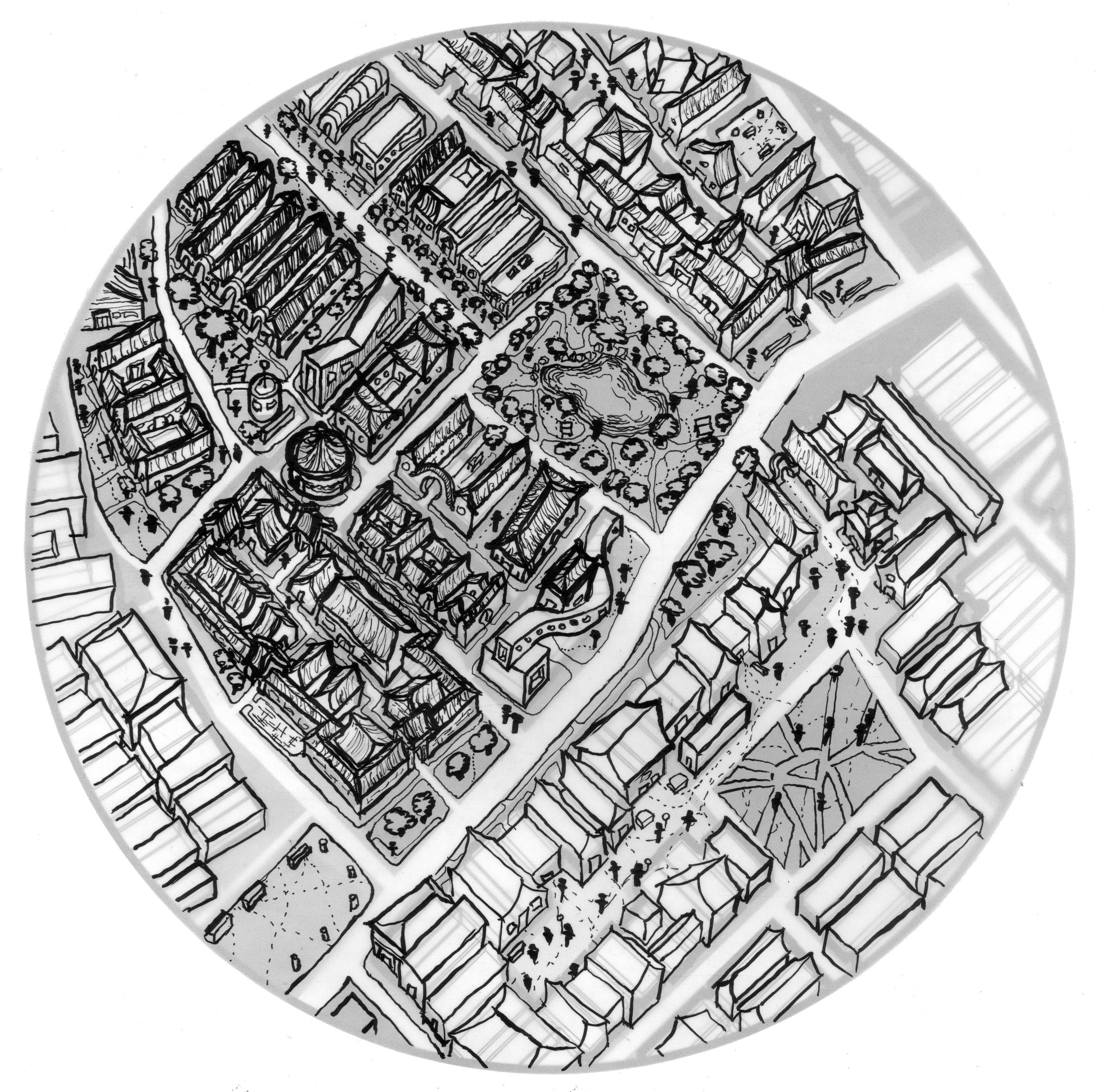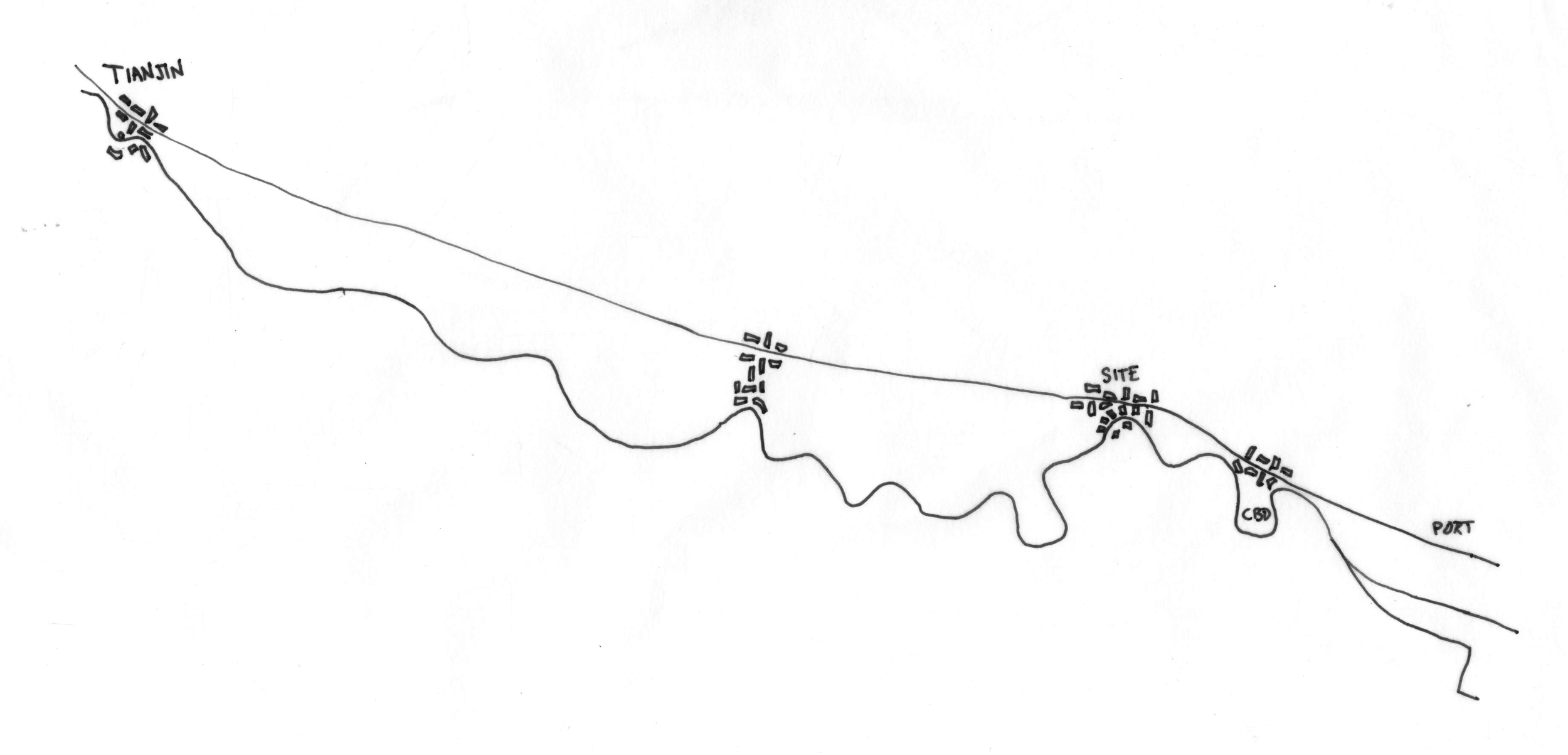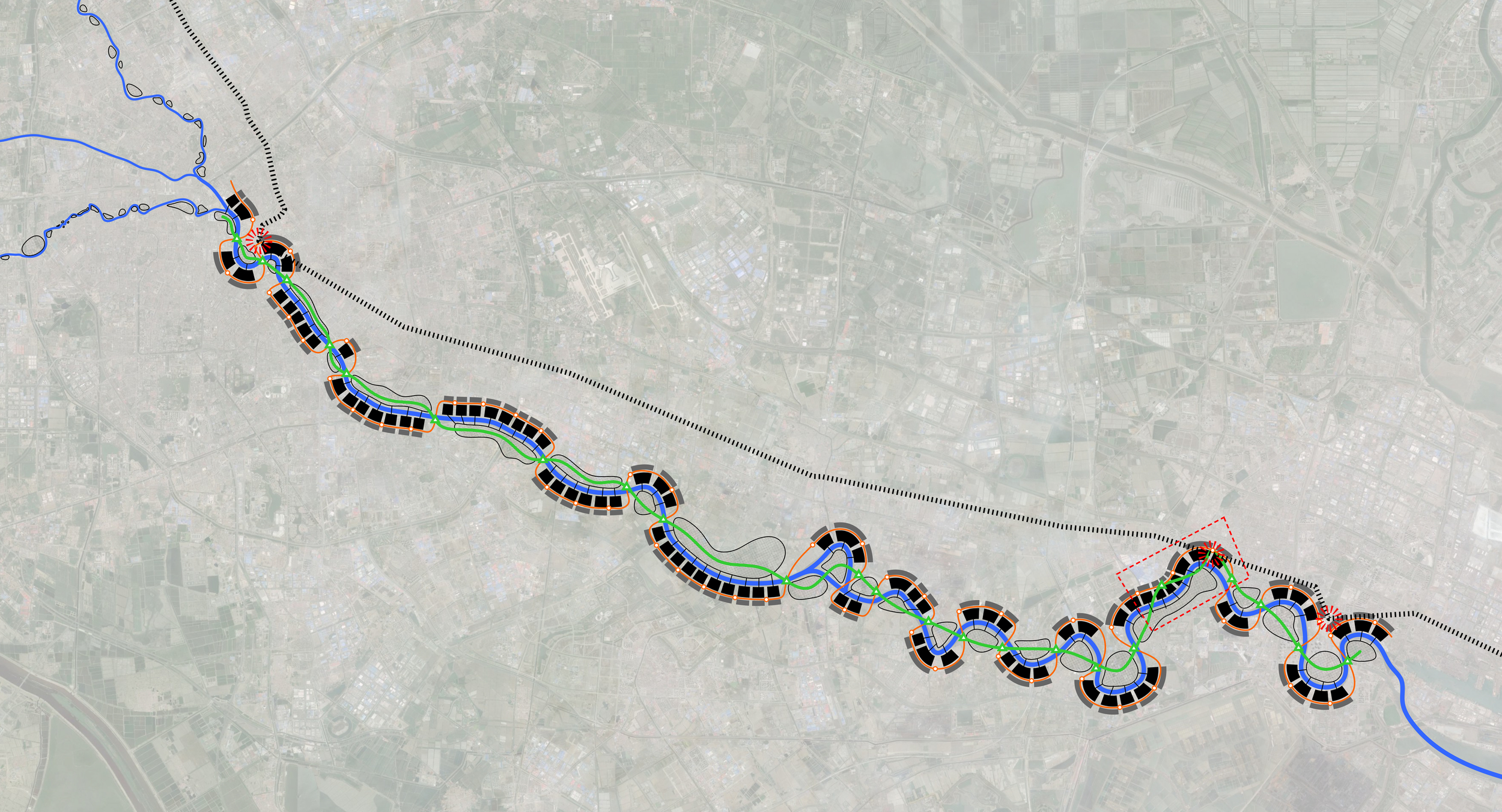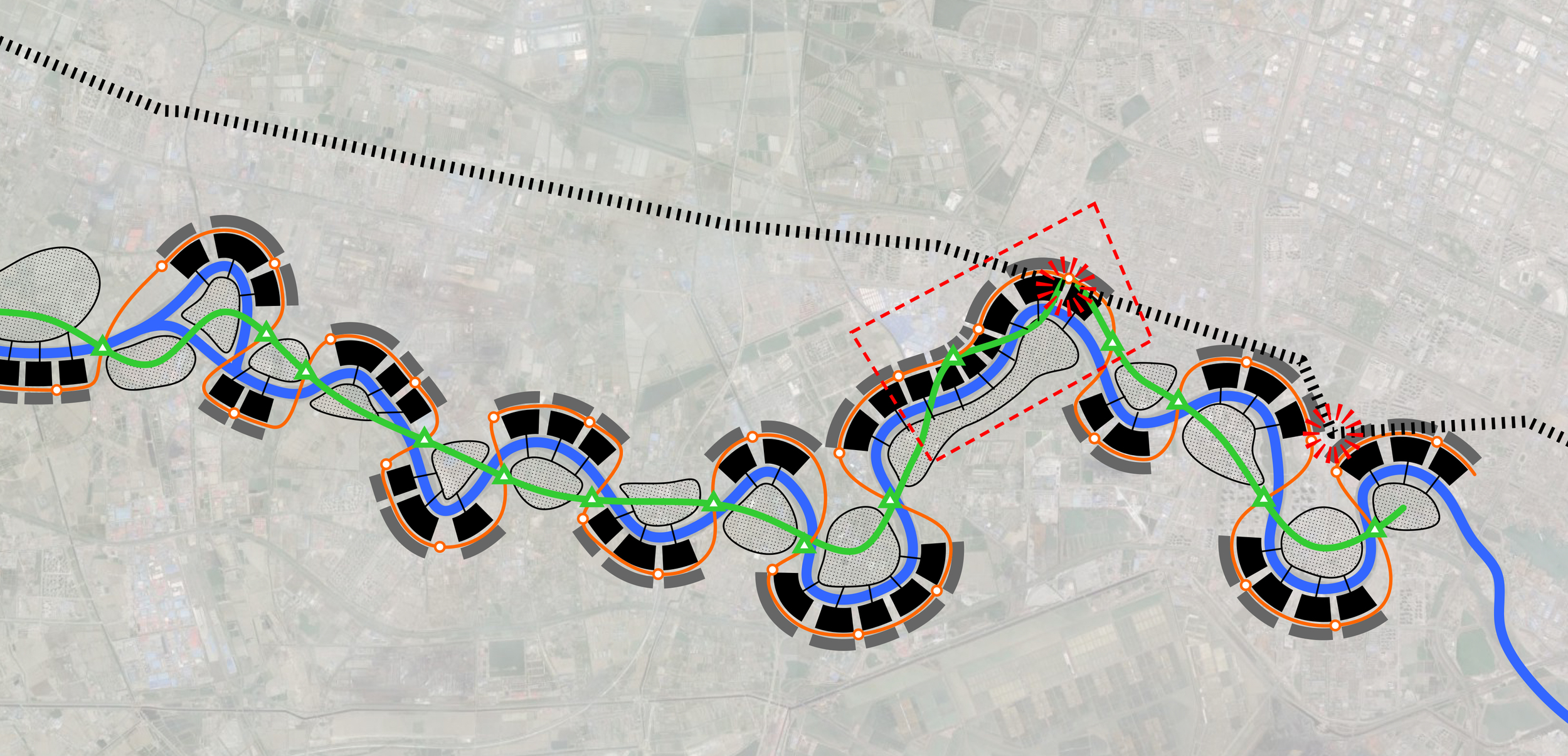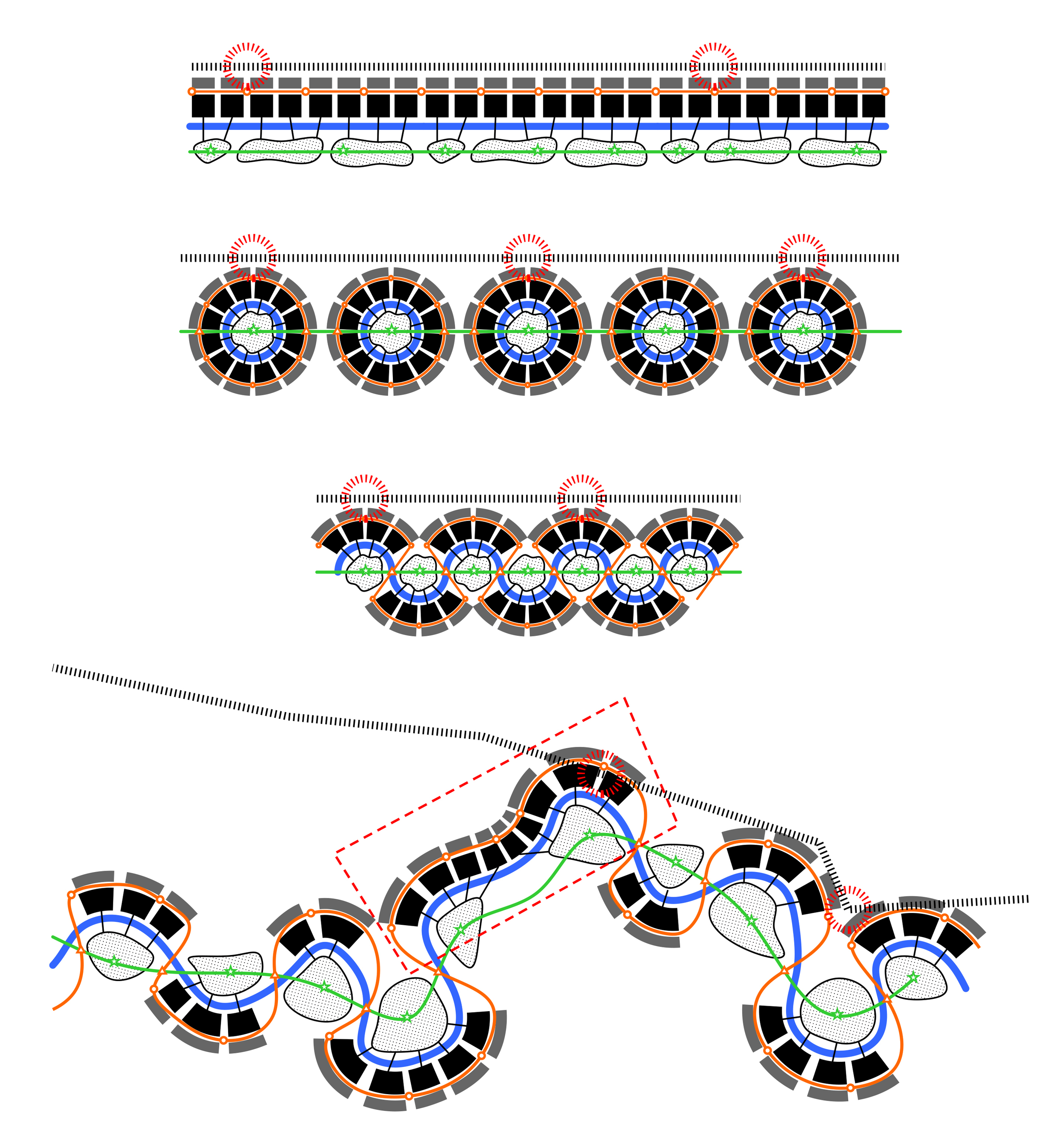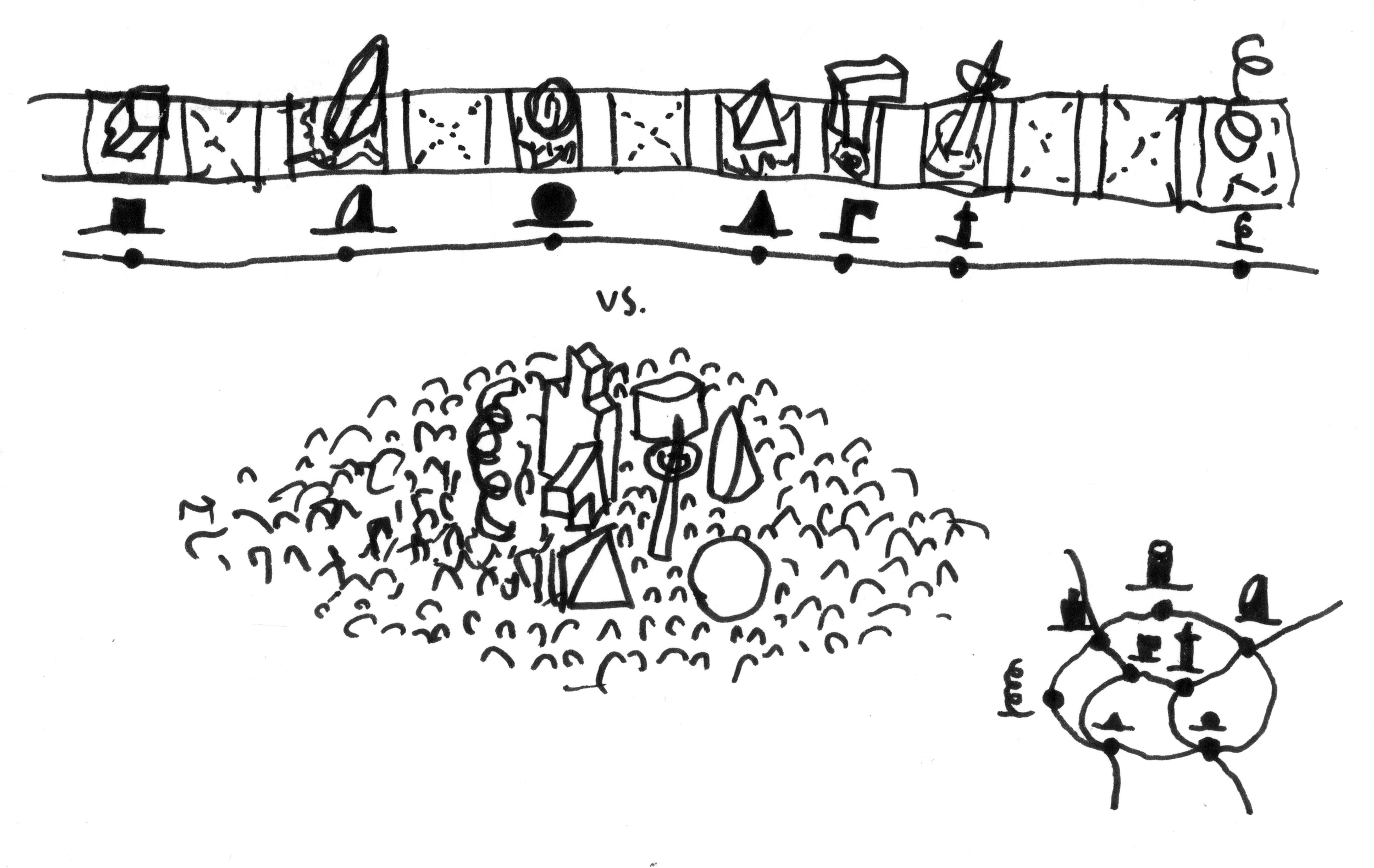
Master plan for a ward-based linear city, Tianjin, China
** Nominated for the H.I. Feldman Prize for 2015 (Yale School of Architecture)
** Published in Retrospecta 38 (Yale School of Architecture, 2015)
** Published in Constructs (Yale School of Architecture, 2015)
** Exhibited in Tomorrow, the year-end exhibition of student work (Yale Architecture Gallery, 2015)
Part 1
Sited adjacent to the Tangu station of the high speed Beijing-Tianjin Intercity Railway along the Hai River, this master plan is a proposal for a ward-based urbanism which utilizes the spatial characteristics of the industrial site in order to develop new urban patterns while remaining sensitive to site memory. By preserving and reusing a key number of buildings and footprints on the site, the existing industrial area is recontextualized into new urban uses and forms. The different wards allow for a variety of fabrics to be maintained and offers an opportunity for development that utilizes its site’s material characteristics, architectural language and property lines.
The master plan follows a model of linear urbanization which develops along the Hai River, connecting Tianjin to Beijing, and connecting the River to the Beijing-Tianjin Intercity Railway. Responding to the river’s form, a number of dense centers are nested into the river’s inner riverbanks, with each center connecting to a sequence of wards on the opposite outer riverbank. The wards and centers along this linear city are connected by multiple modes of transportation: subway, light rail, water taxi, and road. This ward-based proposal is designed to maintain a lower density along the river’s edge, while allowing the surrounding area to develop.
The industrial site adjacent to Tangu station becomes divided into six wards, whose boundaries are defined by the existing property lines of the site. Recontextualizing the existing properties of each site suggests a use for each new ward: campus, commercial zone, art center, urban village, neighborhood of row housing, and technology development hub. The wards are connected on the north end by a main arterial road with light rail transit, and on the river end by a system of water taxis.
Part 2: A campus of courtyards sensitive to memory, Tianjin
(In partnership with Mahdi Sabbagh.)
(Yale School of Architecture, M.Arch. Fall advanced studio 2014. Critic: Alan Plattus, with Andrei Harwell.)

